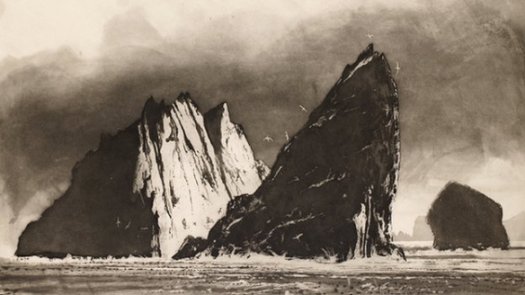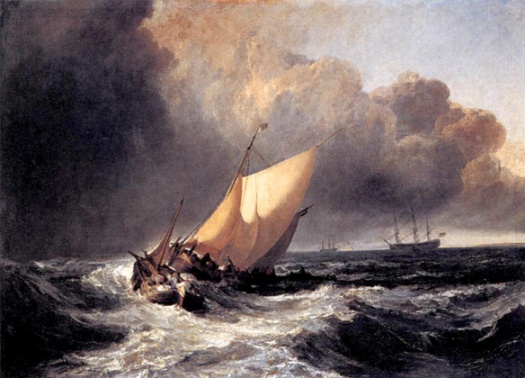It is surprising to me that in the UK there is a TV series that answers the question “What Do Artists Do All Day?“. Perhaps we really are living in the era of the creative as Chase Jarvis tells us. Having blown the best part of a day watching these videos my favorite had to be the one that shows printmaker Norman Ackroyd producing one of his large scale prints. In reading about David Hockney I was fascinated to learn more about the etching process to prepare prints and to see a master in action, in the videos below, adds another level of understanding. It’s amazing to me that such delicate watercolors can be produced by working on a copper plate with the added level of complexity that the work on the plate has to be done in reverse. Ackroyd has his reference image set up in a mirror to facilitate this seeing in reverse.
I was struck by the nature of Ackroyd’s project – to make images of the outlying islands of the British Isles – and that he tracks where he’s been using push pins on a map of the british isles. This of course has parallels with the Atlantic Basin project of Thomas Joshua Cooper. His work references watercolors that he’s made on location which is quite an undertaking in itself. A collection of his watercolor sketches from the Shetland islands is available and this work will be the subject of an exhibition later in 2014.
Check out a day in the life of Norman Ackroyd in the videos below.



